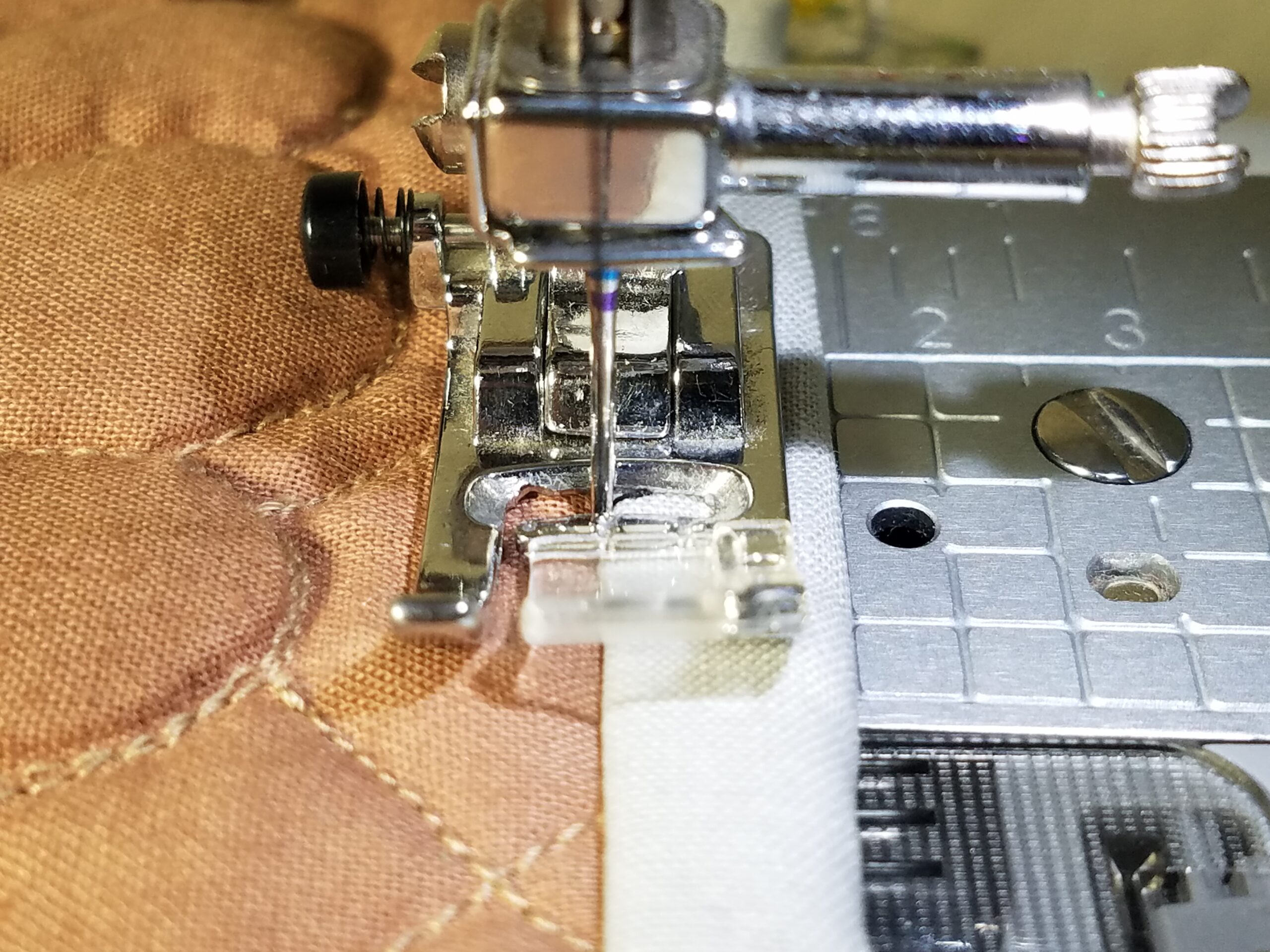
A quilt isn’t a quilt until is bound. Finishing that outer edge transforms a patchwork into a full-fledged quilt. The binding adds strength, durability and a final frame to our pieces. It’s the last touch, the picture frame of your masterpiece. Let’s look at fabric selection, determine your preference of width for the binding strips, and then talk about how to calculate yardage.
Fabric Selection
There are many options available to quilters when it comes to determining the fabric for binding. One isn’t better than another, so it is more of a design choice and a personal decision. Here are some things to consider:
1. If your quilt has another border you might choose to use the border fabric for the binding, so it matches.
2. You can choose to use another fabric from the quilt for binding (this keeps a harmony of color/prints within the project).
3. Creating a scrappy binding will utilize all remaining fabric strips from your project. By linking those strips together, it can easily be used for a more whimsical binding.
Determine Binding Width
There is one thing you will need to decide – what size binding strips would you prefer? Traditional binding was cut as 2-1/4” strips. Another choice is to use 2-1/2” strips. I tend to prefer using 2-1/2” since I like to see more of the binding, especially if it is a different color than the outer border. It can also be a bit easier to manipulate once it is stitched to the quilt for hand finishing.
Yardage Calculation
Let’s determine the amount of yardage you will need to create your binding. Begin by either measuring your completed quilt or referencing the published pattern for the finished size. Add those measurements together for a total number of inches = the quilts perimeter. Then plug that number into the formula below.
NOTE: calculations are based on 44”/45” fabric width – with 40” used in calculations as the “useable width” taking into consideration the inches needed to join strips.
Perimeter in inches ÷ by 40” = the number of strips needed
ex. 50” x 72” quilt – 50 + 50 + 72 + 72 = 244
244 ÷ 40 = 6.1 round this to 7 (number of strips)
The number of strips x width of strips to be used = minimum yardage
ex. Using 2-1/2” wide strips
7 strips x 2.5” widths = 17.5 inches – minimum
Minimum number of inches needed + 5” (to insurance enough yardage) then round that number to the nearest 1/8 yard to determine yardage to purchase.
ex. 17.5 inches + 5 inches = 22.5 inches rounded up 1/8 yd = 3/4 yard
Purchasing 3/4 yard of binding fabric will insure you enough yardage to straighten your fabric, cut the (7) strips needed and have a little extra “in case” of a miss-cut. This formula will make binding a pleasant experience.
Happy Quilting,
Colleen Tauke
Managing Editor NQC

I am repairing a Grandmother's flower garden quilt. I have taken it apart and am putting in new batting and new backing. But I have no idea how to bind a quilt with hexagon edges! Please help!<strong>
Very good formula to calculate binding, thanks
Do you add any inches to the total perimeter to allow for mitered corners? I read once to add 20 inches but that always left me with at least a foot more than needed, so I'm wondering if adding 10 inches would be better?